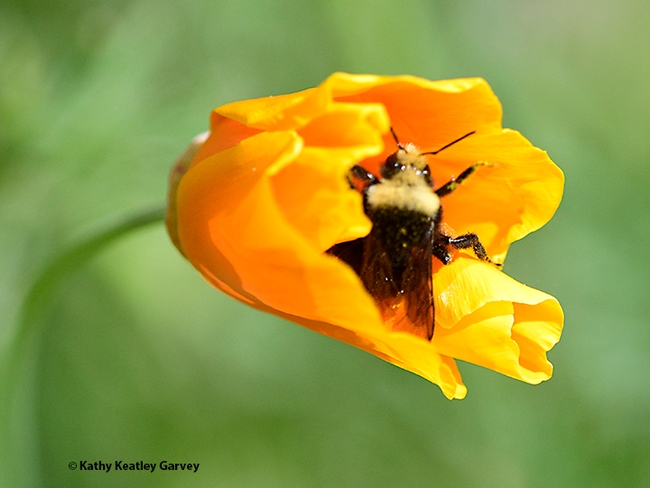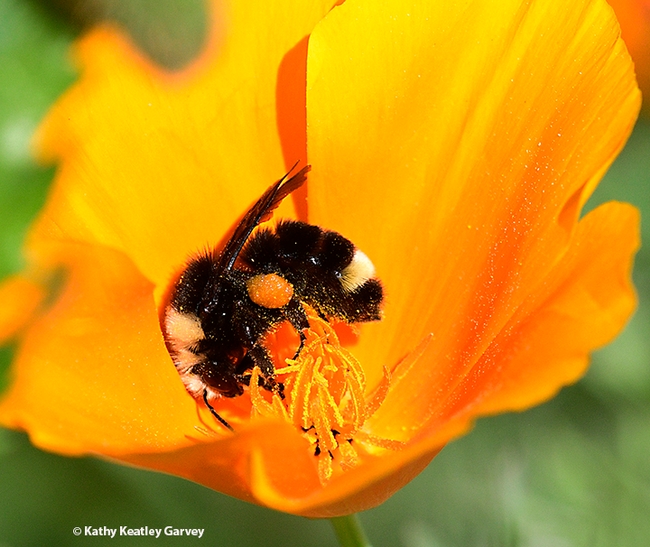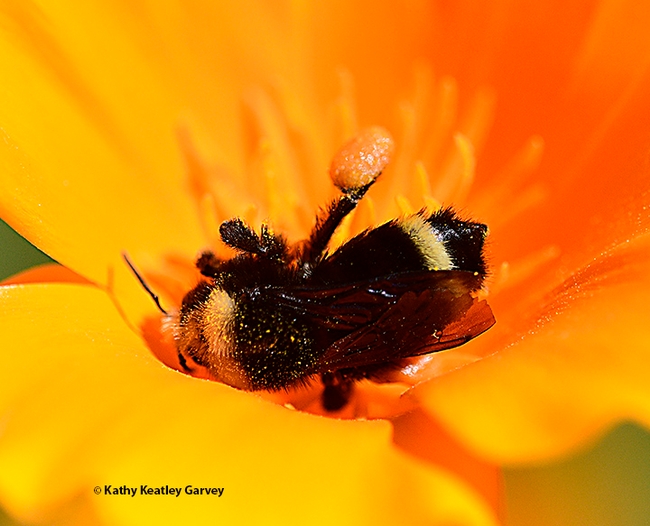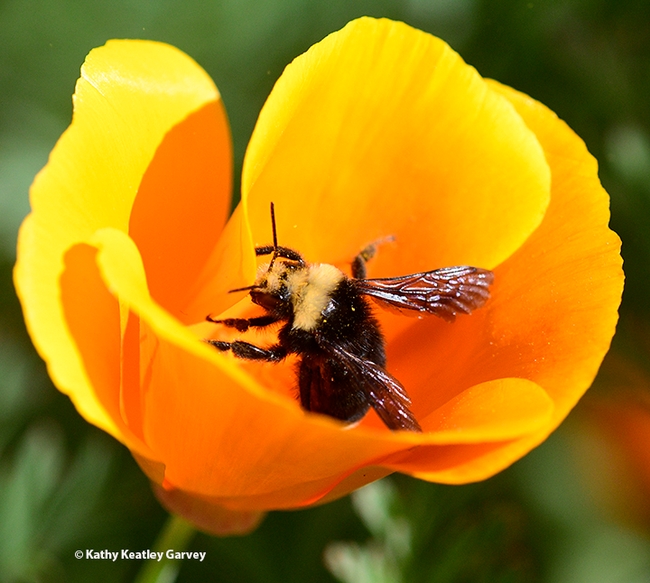There is no "Planet B."
The Earth is all we have.
Today, April 22, is Earth Day (an annual event launched April 22, 1970) and what a perfect occasion to celebrate a native bee and a native wildflower.
Bombus vosnesenskii,aka the yellow-faced bumble bee, meet the California golden poppy, Eschscholzia californica, the California state flower. (The California dogface butterfly, Zerene eurydice, is the state insect, but shouldn't B. vosnesenskii rank as a runner-up?)
Why do we celebrate Earth Day? "To demonstrate support for environmental protection," according to Wikipedia. "In 1969 at a UNESCO Conference in San Francisco, peace activist John McConnell proposed a day to honor the Earth and the concept of peace, to first be observed on March 21, 1970, the first day of spring in the northern hemisphere."
The late Robbin Thorp (1933-2019) distinguished emeritus professor, UC Davis Department of Entomology and Nematology, always encouraged us to look for, photograph and celebrate bumble bees. A tireless advocate of pollinator species protection and conservation, Thorp was known for his expertise, dedication and passion in protecting native pollinators, especially bumble bees, and for his teaching, research and public service. In his retirement, he co-authored two books Bumble Bees of North America: An Identification Guide (Princeton University, 2014) and California Bees and Blooms: A Guide for Gardeners and Naturalists (Heyday, 2014).
Seen any bumble bees lately? Connect with the California Bumble Bee Atlas. It's a project coordinated by the Xerces Society for Invertebrate Conservation. As its website says: It's a "collaborative community science effort to track and conserve the state's native bumble bee species.? ?This year's field work starts March 15, 2024!" Grants from the U.S. Fish and Wildlife Service's Wildlife and Sport Fish Restoration, the Bureau of Land Management, and other agencies support the project.
Happy E. Day...and Happy B. Day!
Attached Images:

A yellow-faced bumble bee,Bombus vosnesenskii, buzzes into a barely opened California golden poppy in a Vacaville garden. (Photo by Kathy Keatley Garvey)

Check the orange pollen on this yellow-faced bumble bee, Bombus vosnesenskii(Photo by Kathy Keatley Garvey)

And we have a lift-off! The pollen basket is easily recognized here. (Photo by Kathy Keatley Garvey)

Ready for take-off! The bumble bee, Bombus vosnesenskii, prepares to leave the California golden poppy. Both are natives. (Photo by Kathy Keatley Garvey)